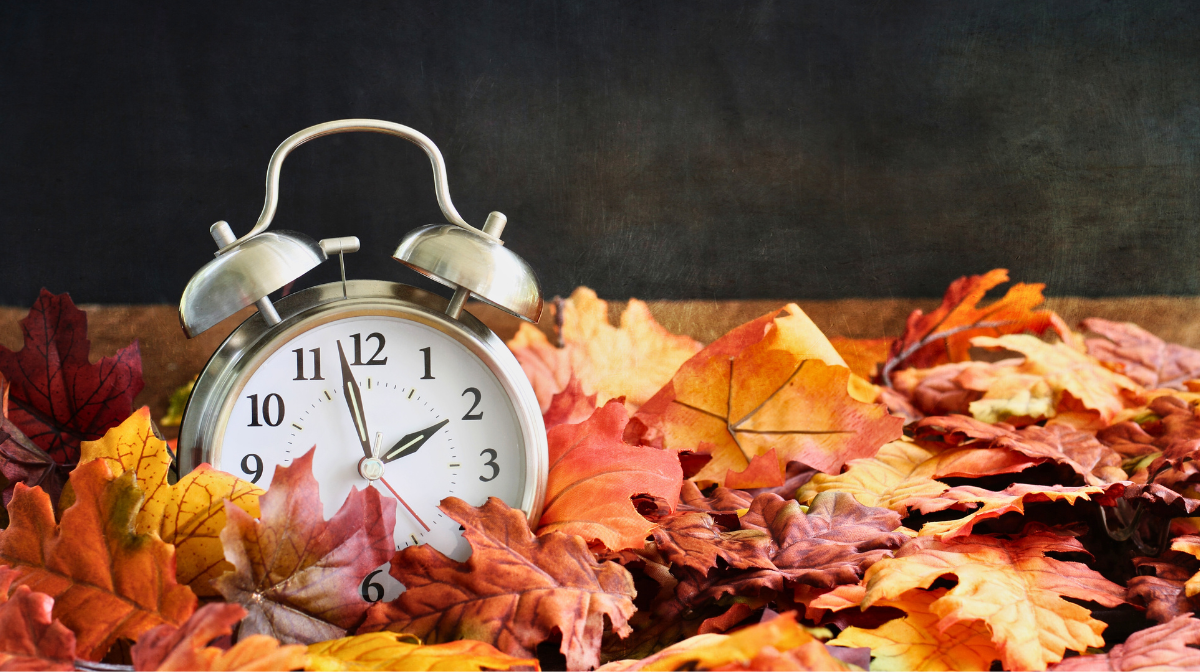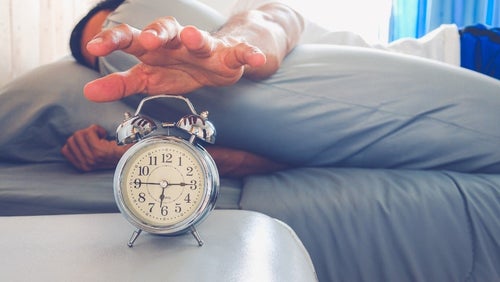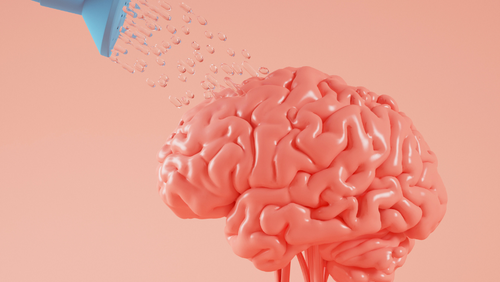The Hidden Impact of Daylight Saving: Sleep, Energy, & Wellness


It’s that time of year again—the sun is going down before 5 PM and we’ve officially changed the clocks. This shift in November marks the end of daylight saving time and the return to standard time.
Daylight saving as we know it began in 2007, but the concept was actually presented centuries ago and officially instituted in the US in 1918. The idea was originally introduced as a way to save energy and resources, especially during times of war.
Today, the concept behind daylight saving is to provide people with more daylight in the evening, making the most of natural light.
However, the continued use of daylight saving is controversial, as the time changes can have unintended health consequences.
Changing the clocks can throw off your circadian rhythms—your body’s natural clock—causing disruptions in sleep, energy, and mood.
As of now, fewer than 40 percent of countries currently implement daylight saving time, although more than 140 countries had undertaken the policy at some point.1
In this article, we’ll explore how shifting time through daylight saving can impact the body's natural clock as well as strategies to prevent some of the negative side effects.
Jump to:
- The Biological vs. Social Clock
- Social Jet Lag
- Daylight Saving & Circadian Misalignment
- Individual Variation Within Internal Clocks
- How Daylight Saving Influences Sleep, Mood, & Energy
- Tips for Mitigating the Impact of Daylight Saving
The Biological vs. Social Clock
One major way daylight saving time can affect our bodies and health is through circadian rhythms.
Circadian rhythms are our bodies’ natural rhythms that operate on a 24-hour cycle—they represent the biological or internal clock, which primarily responds to light signals through a process called “entrainment” to try to stay in sync with the environment’s 24-hour cycle.
Our biological clock is an important system in the body and influences functions like sleep, temperature, hormones, and other mechanisms.
However, while our natural rhythms operate on a 24-hour schedule, they don’t necessarily align with the sun's schedule, the solar clock, or our social schedules, the social clock.
The social clock is how time is represented by society, including work and school hours, and daylight saving time.
In modern life, it's very common for our internal clocks to misalign with our social clocks. This is known as ‘circadian misalignment’ and can trigger social jet lag.2
Social Jet Lag
Social jet lag refers to a form of jet lag that isn't caused by travel, but rather, your biological schedule misaligning with your social/work schedule, leading to shifts in sleep patterns.
Social jet lag is often seen in the difference in sleep hours when you’re working and on your days off. For work, most people are bound by the social clock, and so must wake up relatively early. But when you’re off, you can follow your own biological clock, which in today’s times, tends to be shifted later.
Social jet lag and circadian disruption are strongly correlated with a reduction in sleep duration.2
This leads to tiredness, fatigue, and other symptoms at the beginning of the work week because your body must reset its sleep and wake schedule to align with your working hours.
Unfortunately, in this way, many people remain in a constant state of social jet lag, oscillating between sleeping on their body's schedule and sleeping according to their social and work schedule.
So, why do many of us naturally want to go to sleep and wake up later than our social schedule allows?
This misalignment is partly caused by increased exposure to light in the evening, which in modern times is usually artificial light. For most people, this shifts our sleep and wake schedule later.
The problem with constant social jet lag is that it can have detrimental effects on the body.
Social jet lag is linked to various issues including increased likelihood of being a smoker, higher caffeine and alcohol consumption, higher incidence of mental health issues and mood disorders, increased risk of metabolic disorders, higher rates of cardiovascular problems, and impacted cognitive and academic performance.2
And daylight saving only makes it worse...
Daylight Saving & Circadian Misalignment
Daylight saving time can worsen the issue of circadian misalignment and social jet lag by increasing the discrepancy between the sun clock and the social clock, and in turn, your internal clock and the social clock.2
For example, let's say it's winter and you wake up for work every day at 7:00 AM. This is, for many, an earlier schedule than our biological clocks are on, partly due to factors like artificial light but also potentially just due to genetics.
So, at this point, your internal clock is already misaligned with the social clock, causing social jet lag. Now, let's say it's time for daylight saving in March.
The clocks are shifted forward, which means instead of waking up at 7:00 AM, you're actually waking up an hour earlier according to the solar clock. Now, you'll be even more misaligned than you already were, causing symptoms of social jet lag.
Additionally, it's easy to underestimate the impact of daylight saving since we only move the clock by an hour either forward or back.
However, just one hour can disturb the natural cycle in a significant way. Changing the clocks by an hour can throw off our body clock’s relationship to the social clock by weeks in terms of the seasonal changes between sunrise and work start time.2
This can be seen in March when the clocks are shifted forward. During winter, most people who live at higher latitudes get up for work before sunrise. Then weeks later in spring, they begin to rise with the sun, and then in the following weeks, the sun gets up before them. This creates a natural progression.
However, when the switch to daylight saving time occurs in March, they're then catapulted back into getting up before the sun again, throwing off this progression.2
Thus, through circadian misalignment and social jet lag, daylight saving can have a significant impact by disrupting your natural rhythms and routine, and, in turn, overall wellness.
Individual Variation Within Internal Clocks
Everyone has a biological clock which influences various body mechanisms.
However, peoples' body clocks, or chronotypes, vary—some naturally wake up early, known as “larks”, while others prefer staying up late, known as “owls”.
A chronotype can refer to a person's natural sleep-wake preferences or the actual timing of their body clock's alignment with the day-night cycle.2
In general, most people’s chronotypes fall somewhere in the middle, but there are often more "owls" in a population than “larks”.
Because people have different internal clocks, daylight saving can impact individuals differently...
How Daylight Saving Influences Sleep, Mood, & Energy
Daylight saving time has been shown to have an immediate impact on sleep quality and duration after springing the clock forward in March.
Moving the clocks forward in the spring can generally worsen sleep quality and increase sleep fragmentation. Even weeks after the change, many are still unable to normalize their sleep schedules.
These negative effects represent short-term consequences of daylight saving and are more likely to impact adolescents, night owls, and those who begin their days early.3
To evaluate the long-term implications of daylight saving time, one study done in Northern Russia looked at the effects of daylight saving and standard time on the sleep patterns of school students.
Researchers analyzed self-reported sleep data from 2009 to 2016 during three time periods: seasonal daylight saving (the current norm), permanent daylight saving, and permanent standard time.
The study revealed that students slept the most during the period of seasonal daylight saving.
However, even though students slept more during this period, it was linked to higher rates of seasonal depression, suggesting that the alignment and quality of sleep are more important than total sleep duration.
The study also highlighted that self-reported sleep may differ from objectively measured sleep and that circadian misalignment significantly impacts sleep quality, as shown by differences in weekday and weekend sleep patterns.
During the permanent standard-time period of the study, the team found a small decrease in winter depression symptoms.
Researchers point out that this is significant because any study showing long-term positive effects with the eradication of daylight saving in autumn suggests that chronic negative effects have likely been at play throughout the months of daylight saving.
Further, the negative effects of daylight saving extend far beyond just sleep—changing the clocks may influence various factors, including academic performance, productivity, work, athletic safety and performance, salaries and wages, and risk of motor vehicle crashes and crime.3
Tips for Mitigating the Impact of Daylight Saving
Adjusting to the time change caused by daylight saving can be challenging, but luckily, there are strategies that can help ease the transition and minimize its impact on your daily life.
Pre-Adjustment Tips
One of the best ways to prepare for daylight savings is to start shifting your sleep schedule gradually in the week leading up to the time change.
For example, if you're preparing for the clock's shift forward in March , go to bed 15–20 minutes earlier each night for a few days before the time change.
This gradual adjustment helps your body adapt more easily, reducing the shock of a sudden one-hour shift in your daily routine.
For more on how to prepare for daylight saving, read our article:

5 Tips To Prep Your Body For Daylight Saving Time This Year
It's time to spring forward......
Maintain Good Sleep Habits
Having good sleep habits will make the disruptions to your circadian rhythms easier to cope with during and after the time shift.
To help promote sleep at night, try limiting screen time an hour before bed to reduce exposure to blue light, which can interfere with melatonin production.
Additionally, create a sleep-friendly environment by keeping your room dark, quiet, and cool.
To keep your internal clock stable, it’s also best to maintain a consistent bedtime and wake-up time, even on weekends.
These habits support quality sleep and can help your body adjust more effectively to the time change.

Top 10 Sleep Methods Tried & Tested
From sleeping in the buff to the most talked about supplements....
Sunlight Exposure
Getting early-morning sunlight also helps reset the internal clock and stabilize circadian rhythms.4
Thus, a great way to balance your internal clock is to spend time outdoors in natural light as soon as possible after waking up.
Sunlight signals your body’s internal clock that it’s time to be awake, boosting alertness and helping to align your sleep-wake cycle with the new schedule.
Physical Activity
Regular exercise is another excellent way to support your body during the transition to daylight saving.
Physical activity promotes better sleep quality and overall energy levels.
However, try to avoid intense exercise close to bedtime, as it can be stimulating and disrupt your ability to fall asleep.
Aim for morning or early afternoon workouts to reap the most benefits.

The Two-Way Relationship Between Sleep & Exercise
See how sleep and exercise influence each other, and how to reap the benefits fr...
Take Home Message
While daylight saving time has its positives, for many, the policy is an inconvenience that can cause significant disruptions to sleep, energy, and the internal clock, with the effects more profound than you realize.
Despite the impact on mental and physical health, the vast majority of states in the US continue to implement the time-change policy.
Thus, it’s important to understand how daylight saving may influence your schedule and day-to-day life and what you can do it about.
By implementing strategies to stabilize your own biological clock, you can make the change easier for yourself and mitigate some of the negative effects of the time change, feeling happier and healthier.
READ THESE NEXT:

Brain Endurance Training Improves Performance Among Older Adults, Study Finds
Everyone, both young and old, can improve physical and mental performance and fu...

The Carnivore Diet | Food List, Benefits, and Side Effects
Is meat-only a diet dream or disaster? The know-how on this latest diet trend....

They Did Pull-Ups For 24 Hours Straight, It Went Wrong
Let’s say it wasn’t exactly plain sailing......

A Rutgers University Honors graduate, Jamie grew up on the Jersey shore and double majored in Comparative Literature and Anthropology in college. Jamie is an experienced writer in the health and wellness, biotech, and eCommerce fields. She loves writing with a purpose and has even written for the Department of Justice.
Jamie became drawn to exercise during her time in university and began to notice the physical and mental benefits of moving your body daily. Today, Jamie enjoys Pilates, light weight training, and going on long walks in nature daily.
Jamie is also passionate about eating right and prioritizing gut health and immunity. She is always trying the next innovation in health and wellness. When she’s not writing articles, Jamie enjoys reading, playing guitar, and finding dogs to play with.
- Statista Research Department. “Countries Changing Clocks for Daylight Savings.” Statista, 5 Nov. 2024, statista.com/chart/24473/countries-changing-clock-daylight-savings/.
- Physiol., 06 August 2019, Sec. Chronobiology, Volume 10 – 2019 | https://doi.org/10.3389/fphys.2019.00944
- Johnson, K.G., Malow, B.A. Daylight Saving Time: Neurological and Neuropsychological Implications. Curr Sleep Medicine Rep8, 86–96 (2022). https://doi.org/10.1007/s40675-022-00229-2
- Logan, R.W., McClung, C.A. Rhythms of life: circadian disruption and brain disorders across the lifespan. Nat Rev Neurosci20, 49–65 (2019). https://doi.org/10.1038/s41583-018-0088-y










